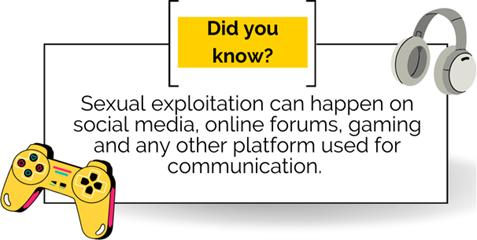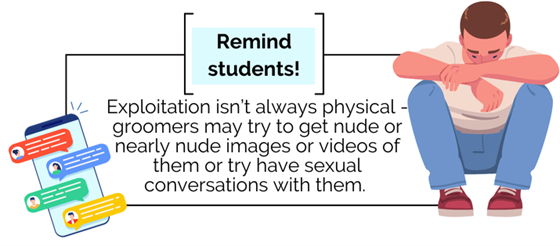What is grooming?
Grooming is a when an adult tries to build a relationship with a young person so that they can exploit them in some way.

Education programmes
Safeguarding Children have developed the Fundamentals of Safeguarding and Child Protection eLearning module for anyone working with tamariki in the intermediate sector, for example, a teacher, teacher's aide, parent/whānau helper or administrator. The module provides information on the prevention of child abuse, and how to recognise and respond to child safety and wellbeing concerns.
NZ Police have developed a child abuse prevention programme for schools which helps students to recognise the difference between healthy and unhealthy relationships in the physical and online worlds and encourage students who have been or are being abused to seek help.

Teachers guide
Public Safety Canada have a developed a detailed toolkit for schools that can be adapted for New Zealand educators. It includes lessons plans and resources around sharing nudes, grooming, sexting and sextortion.
Videos
The Eggplant is a drama-crime-comedy online web series to help young Kiwis safely navigate the Internet. This episode can be used to highlight how serious grooming is, and how groomers can try take advantage of young people.
It's important that young people understand how groomers may try and get close to them. The below video can help educators initiate the conversation about the warning signs of grooming:
Websites
If you want to learn more about how groomers get close to children and how they keep control, you can refer to Netsafe.
In The Know provides tips and tools you can offer young people who may be more vulnerable and curious about creating sexual content.
No Filtr gives a good breakdown of what online grooming can look like and what steps young people should take if someone has sent them inappropriate messages.
